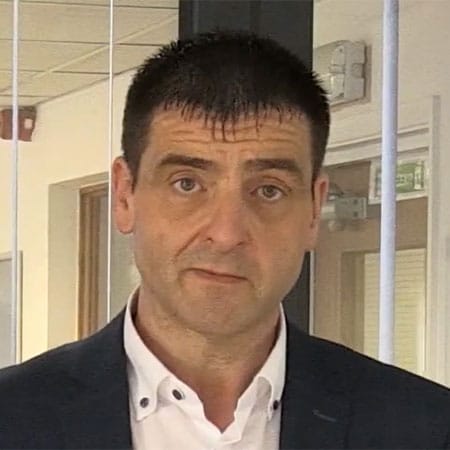What is medical surveillance in relation to licensed asbestos removal?
The management of asbestos in commercial buildings comes with a long list of responsibilities for business owners and building managers. Such duties are meant to help ensure that only the safest and legally compliant practices are used in how asbestos is managed, which may or may not include the removal of the carcinogenic substance from the given site.
Employers are legally obliged to make sure their employees are under medical surveillance by a doctor appointed by the UK Health and Safety Executive (HSE), if they work with specific hazards and undertake certain work activities covered by the Control of Asbestos Regulations 2012 (CAR 2012).
In the case of both licensed and non-licensed asbestos work – licensed work, of course, being work for which the contractor needs to hold a licence from the HSE – there may be a need for doctors to conduct medical surveillance on workers. Such surveillance would encompass both initial and periodic medical examinations on workers.
What is medical surveillance in the context of asbestos removal?
Medical surveillance is an important concept in occupational health. Employers are obliged to make sure the health of their workers is not being impacted by their work. The term “medical surveillance” in this context refers to a scheme of repeated health checks, which are carried out in order to identify any signs of ill health that may be caused by the given individual’s work.
UK law requires that certain medical surveillance measures be implemented in situations where certain hazards – such as lead, ionising radiation, or asbestos – are presented.
If medical surveillance is needed for particular work – such as the removal of asbestos – the employer must use a competent, HSE-appointed occupational health doctor. There is, however, an exception to this requirement in the case of some lower-risk asbestos work.
Why is medical surveillance mandatory for asbestos removal workers?
Regulation 22 of CAR 2012 – the part of this legislation that is concerned with health records and medical surveillance – sets out that employers must arrange appropriate medical examinations for any employees who undertake licensable work or notifiable non-licensed work (NNLW).
With regard specifically to licensable work – which describes much, if not all asbestos removal work – this regulation states that “every employer must ensure that… each employee who is exposed to asbestos is under adequate medical surveillance by a relevant doctor”.
The regulation goes on to say that the medical surveillance required for licensable asbestos work must include:
- a medical examination not more than 2 years before the beginning of such exposure; and
- periodic medical examinations at intervals of at least once every 2 years or such shorter time as the relevant doctor may require while such exposure continues
This mandatory requirement was put in place because of the very real, and serious, risks that licensable asbestos work, including removal, can pose to health.
Any disturbance of asbestos-containing materials (ACMs) at a particular site can run the risk of loose asbestos fibres being released into the air, and consequently breathed in or swallowed by someone nearby.
This, in turn, can lead to a heightened risk of the exposed individual developing a potentially fatal asbestos-related disease, such as mesothelioma, asbestos-related lung cancer, or asbestosis.
Even in the 2020s – more than a generation on from all forms of asbestos being banned in the UK in 1999 – approximately 5,000 deaths a year in the UK are attributable to asbestos-related disease. So, employers must take the legal and moral need to carry out medical surveillance extremely seriously.
Who needs to undergo medical surveillance in the asbestos removal industry?
There are several categories of worker that may need to undergo medical surveillance due to their involvement in a licensed or NNLW asbestos removal operation. This will typically include direct asbestos removal personnel, but also supervisors and potentially exposed ancillary staff.
Such factors as the given worker’s specific job role, as well as the scope for them to be exposed to asbestos – especially for an extended period – will largely dictate whether you do or do not include them in a medical surveillance scheme. Whatever decisions you make, you will need to pay close attention to – and comply with – CAR 2012 and all other relevant parts of UK health and safety law.
It is worth bearing in mind, for instance, that medical surveillance is not generally required for non-licensed, asbestos-related tasks that would be classed as maintenance (so not removal, NNLW, or licensed asbestos work), and where the correct controls are in place.
What does medical surveillance entail for asbestos workers?
Regulation 22 of CAR 2012 makes clear that medical surveillance must be “adequate”. In order to comply with this, a medical examination for asbestos work will need to include:
- Completion of the respiratory symptom questionnaire form
- A clinal examination that emphasises the respiratory system, and that particularly refers to restriction of chest expansion
- The presence of basal crackles and finger clubbing
- Measurement of lung function.
Anyone who undertakes licensable asbestos work needs to have been medically examined in the past two years by an “appointed doctor” – in other words, a doctor who was individually appointed by the HSE specifically for that purpose.
A medical examination for licensed asbestos work will need to be repeated at least every two years, or within a shorter period if a doctor advises this. However, this will only be needed for as long as the given employee continues to do – or expects to continue to do – licensable work.
As for NNLW, the deadline for all workers who were then carrying out NNLW to have had a medical examination was 30th April 2015. Examinations for such workers now need to be repeated no less often than every three years, provided that the given worker continues to do NNLW.
Since May 2015, there has been a requirement for all workers carrying out NNLW for the first time to undergo examination before they start work.
How does medical surveillance benefit workers and employers?
A comprehensive and legally compliant approach to medical surveillance helps to bring various advantages to both employers and workers when licensed asbestos removal work needs to be carried out.
For the worker, there is the peace of mind of knowing that their health is being monitored on an ongoing basis amid such relatively high-risk work as licensed asbestos removal. This allows for any health issues that do emerge to be detected at the earliest possible stage, so that responsible decisions can be taken in light of this.
An employer, meanwhile, will be protecting itself from liability risks by making sure it is in compliance with the medical surveillance requirements outlined under CAR 2012. This will also enable the employer to foster a genuinely safe working environment.
What are the responsibilities of employers in implementing medical surveillance?
In their efforts to facilitate and meet the requirements for medical surveillance of their employees who are carrying out – or set to carry out – licensed asbestos work, employers must be mindful of certain obligations. Not least among these is the need to maintain the confidentiality of individual workers’ health records (bearing in mind that there may be a requirement to forward copies to the HSE in certain circumstances, as detailed below).
CAR 2012, Regulation 22 makes clear that in cases where medical surveillance is being carried out on the employer’s premises, the employer must ensure suitable facilities are made available for this purpose.
Employers that are seeking to fulfil the medical surveillance requirement must also, presuming that reasonable notice has been given, grant an employee access to their personal health record. Furthermore, if the HSE requires copies of such personal health records, the employer is obliged to provide these.
In the event of the employer ceasing to trade, it is required to notify the HSE – in writing, and without delay – and make available to the regulator all personal health records the employer has kept.
The employer will also be expected, at any stage of a given licensed asbestos removal operation, to act on any medical recommendations and adapt its work practices to protect worker health.
What happens if a worker’s health is affected by asbestos exposure?
As a consequence of medical surveillance, it may be discovered that an employee has an identifiable disease or an adverse impact on their health that a relevant doctor believes has been caused by exposure to asbestos at work.
If, in your capacity as an employer, this happens with one of your workers, you must carry out the following actions, as set out by CAR 2012:
- Make sure a suitable person informs the employee of this and provides the worker with information and advice regarding further medical surveillance;
- Review the risk assessment;
- Review any measure adopted in order to comply with Regulation 11 of CAR 2012 (on the prevention or reduction of exposure to asbestos), taking into account any advice that a relevant doctor or the HSE may give;
- Consider assigning the employee to alternative work where there is no risk of them being subject to further asbestos exposure, taking into account any advice that a relevant doctor may provide; and
- Provide for a review of the health of every other employee of yours who has been similarly exposed. This should include – where it has been recommended by a relevant doctor or the HSE – a medical examination incorporating a specific examination of the chest.
How does medical surveillance integrate with other asbestos management strategies?
We have written previously here at Oracle Solutions about the importance of the asbestos management plan. This is a document that sets out the procedures and arrangements for managing the risks that ACMs pose on a given site.
A good and comprehensive asbestos management plan is sure to address such vital elements as risk assessment, exposure control, and training. Medical surveillance should fit in alongside such measures.
As an employer, you should be thinking carefully about how medical surveillance will work with and complement the other safety measures you implement at the location where you are coordinating licensed asbestos removal work. This will help ensure a holistic approach to asbestos management that effectively covers all conceivable risks and scenarios.
Conclusion: medical surveillance plays a vital role in asbestos-related health and safety measures
As we have hopefully made clear throughout this article, medical surveillance is critical for protecting the health of asbestos workers, as well as ensuring that commercial building environments are as safe as possible for other individuals who may come into contact with them.
This means that when an employer achieves complete compliance with this element of the UK’s asbestos and health and safety regulations, it won’t be merely minimising its own legal risks – although this, too, should be a powerful motivator to act.
To learn more about the accredited and licensed asbestos services that we can provide – including removal – at sites around the UK, please don’t hesitate to email us for a free and fast quote or call the Oracle team today.

Written by Jess Scott
Jess Scott has been an all-round asbestos consultant since 1996. That’s nearly 3 decades of asbestos knowledge. He spends his time sharing that knowledge with the team at Oracle and with their clients. Jess's goal is, and always has been, to use my expertise in helping people to comply with the law. This legal compliance ultimately helps to protect everyone from the harmful effects of asbestos. Jess has acted as an asbestos expert witness in legal cases and is involved in many asbestos educational activities throughout the UK.

